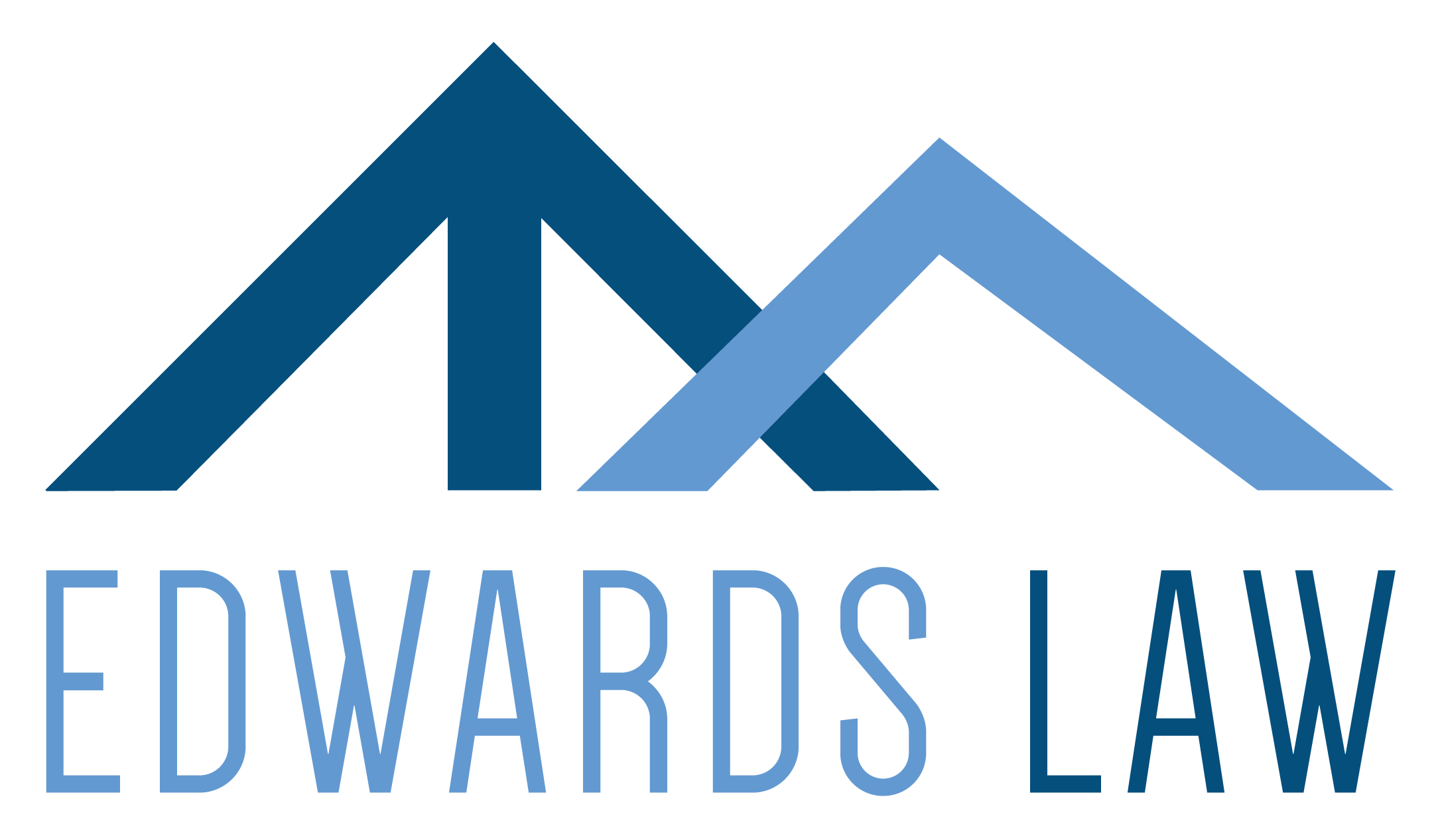
23 Dec Processing Electronically-Stored Information for E-Discovery – Podcast Series 2
Last week Edwards Law began a podcasts series on electronic discovery. In our first podcast we went into the details of processing electronically-stored information, including how to understand electronically-stored information (ESI) processing functions and deciding whether or not to process ESI. Today we will address how your attorney should be working with opposing counsel to assist in the processing and how to organize the processing logistics.
WORKING WITH OPPOSING COUNSEL
In our prior blog we discussed the importance of first determining whether or not your company should spend the time and resources processing electronically-stored information during the e-discovery process in litigation. One way for you and your company to do this is to have your attorney discuss the needs of the particular case with opposing counsel early on in the discovery phase of litigation. In some cases, the opposing attorney may not be interested in metadata and does not intend to use a document review platform to review the electronically-stored information.
If you and your attorney are not made aware of this, you could unnecessarily incur the costs of preserving, collecting, and processing electronically-stored information to protect unwanted metadata.
By clearly addressing the parties’ production expectations upfront, including how opposing counsel intends to review and use the produced ESI, you and your company can opt for simpler or no processing.
Also, discussions and negotiated agreements between you and your opponent about e-discovery in litigation can go a long way in minimizing the risk that your opponent will later challenge your company’s processing protocol.
If you and your attorney decide not to obtain your opponent’s consent before using a processing method that removes electronically-stored information from the review set, you should:
- Make sure the removed electronically-stored information is not relevant to the case; and
- Carefully and contemporaneously document the reasons for your decision to process the electronically-stored information in that manner.
When conferring with opposing counsel on processing methods and preferences, your attorney should ensure the negotiations foster cooperation and are proportionate to the needs of the case as required by state and federal rules.
ORGANIZING THE PROCESSING LOGISTICS
Your attorney has an obligation to ensure a successful electronically-stored information processing workflow by:
- Selecting a capable processing entity; and
- Overseeing the processing workflow and working with the litigation technologists.
Selecting the Processing Entity
While your attorney may be primarily responsible for the ESI processing strategy you and your company decide to implement, your litigation technologists are just as instrumental in that they often implement that strategy.
When processing electronically-stored information, technologists typically:
- Load the collected ESI into a processing tool;
- Direct how the processing tool handles the ESI (for example, whether or not the system de-duplicates the ESI, extracts and filter by metadata, and extracts text; and
- Set up the processing tool to format the extracted metadata, text and and other information so that it:
- meets counsel’s review and document production needs; and
- is compatible with the document review platform that your attorney used to host and review electronically stored information.
Using E-Discovery Vendors
E-discovery vendors offer tools for processing ESI. These vendors typically charge for processing based on both:
- The data volume of electronically-stored information (per gigabyte); and
- An hourly rate for time their employees spend setting up, executing, and quality checking the processing work.
Vendors offering bundled services (such as collection, processing, and hosting in a document review platform) will often not charge separate processing fees.
Before using a processing vendor and committing to processing costs that a vendor bases on volume, you and your attorney must clarify how and when the vendor calculates the data volume of ESI for billing, because data volume varies throughout processing.
For example:
- When the vendor restores compressed files to their full data size, the initial data volume increases (such as when counsel unzip ZIP files);
- In contrast, the volume of ESI ultimately exported for upload to a document review platform typically decreases after filtering and other processing functions like de-duplication and de-NISTing.
Before you and your attorney select a vendor, you should compare the vendors’ processing offerings and cost structures. Some vendors charging higher rates might include a comprehensive suite of services, while others offering lower base rates may charge additional fees for more sophisticated features.
You and your attorney should also consider the competing vendors’ reputations and technologies. Newer vendors or experienced vendors offering newer, untested technologies might offer services at a lower cost to attract business, but opting for less proven technology or personnel could lead to unexpected and problematic results or delays.
Additionally, you and your attorney should understand the limitations of any processing tool you consider. Your counsel at a minimum should
- Confirm with each potential processing vendor whether or not, historically, the processing tool has functioned reliably and accurately;
- Consider any weaknesses of the processing tool in terms of scope of performance; and
- Determine whether premium charges will apply if the processing entity is forced to allocate additional processing resources (such as technology or staff) to meet a particular deadline.
You and your attorney however should be cautious of retaining multiple entities to perform various ESl-related tasks. Every entity has processes and tools that they know well, and some of that knowledge gets lost each time vendors or counsel transfer ESI to a new entity for the next phase.
Using Outside Counsel’s Staff
If you have outside counsel assisting in the process, you and your company might have a range of ESI processing support available. For example, the firm might:
- Employ litigation technologists to assist with the technical side of e-discovery; or
- Maintain ESI processing tools to provide a broader range of services without involving an e-discovery vendor.
While some law firms that offer ESI processing charge for these services in a manner similar to e-discovery vendors, other firms take alternative approaches to cost and might either:
- Classify litigation technology as overhead without charging clients additional fees or costs for that type of work; or
Charge clients a flat fee for e-discovery services, including tasks such as processing, hosting for review, and production.
Using Your Company’s In-House Staff
If you are using in-house counsel, you might be able to enjoy fixed processing costs by maintaining an in-house ESI processing tool and employing litigation technologists who are trained and qualified to use it.
While this approach might require a significant and ongoing investment, it allows you and your company to avoid the profit margin that is built into a vendor’s or law firm’s processing fees. Also, maintaining in-house processing tools and technologists gives you greater control over the process.
However, this approach might cause tension if you have outside counsel and in-house counsel fails to include outside counsel in related decision-making. For example, if your company’s general counsel and in-house litigation technologists decide to export only ESI that meets
certain parameters (for example, certain file types or documents within a particular date range) without consulting outside counsel, outside counsel’s ability to effectively and truthfully respond to discovery inquiries could be compromised, as outside counsel typically represent the client in court and sign discovery responses. Thus your outside counsel must be aware of that decision and agree that the limited export does not jeopardize the integrity and defensibility of the process.
Overseeing the Processing Workflow
Regardless of which processing entity you and your company choose, your attorney needs to do the following:
- Know about relevant legal technologies per professional rules of conduct and
- Adequately supervise non-attorneys, including litigation technologists, who assist per professional rules of conduct.
Specifically, your attorney must:
- Determine which ESI to export from the processing tool to the document review platform for review. While technologists or other e-discovery consultants may advise counsel about which file types should be excluded from the review set, counsel should make the final decision;
- Specify the information the ESI processing tool exports for upload to the document review platform. Technologists servicing the case should not exclude metadata from export without counsel’s direction and consent;
- Direct the technologists to perform quality checks at each stage of the process, and confirm that these checks have occurred, including when the technologists:
- load ESI into the processing tool;
- execute processing functions; and
- export ESI (including metadata and text) to a document review platform;
- Confirm that the technologists:
- review error (exception) reports generated by the processing tool; and
- resolve any processing errors to counsel’s satisfaction; and
- Maintain detailed, contemporaneous notes about their processing decisions. Thorough documentation often helps your attorney if opposing counsel later challenges any processing decisions.
To properly and efficiently fulfill these duties, you attorney should engage in regular discussions with the litigation technologists, and fully inform the technologists of the context of the case and provide them with any applicable e-discovery orders and agreements
Specifically, your attorney and the technologists servicing the case should discuss:
- The nature of the ESI;
- How to handle document families;
- The work product that the technologists must export from the processing tool;
- The compatibility of the processing tool’s work product with the document review platform that your attorney will use for review;
- The format in which your attorney must produce ESI to other parties; and
The amount of time needed for ESI processing and the overall timeframe for discovery.
Nature of the ESI
To properly advise you and your attorney on appropriate processing functions for a case, litigation technologists must understand the type of electronically-stored information at issue and how you and your attorney preserved and collected it.
For example, if the technologists understand that the ESI consists primarily of PDFs generated during a large-scale scanning operation, they can advise counsel on:
- The relative uselessness of the metadata; and
- The need to make scanned images searchable.
Document Families
Some ESI, such as emails with attachments and files that contain other embedded files, is electronically linked to other files. Each set of linked files is called a document family.
If your attorney needs the litigation technologists to maintain the family relationships during processing so that they remain intact during the review and production phases, he or she must communicate that expectation. The technologists can then process the ESI in a manner that preserves and exports those relationships.
Export from the Processing Tool for Review
Your attorney must inform litigation technologists how they expect to navigate the ESI after it has been exported from the processing tool and uploaded for review in the document review platform. For example, your attorney should identify whether they:
- Plan to search all ESI in the document review platform;
- Want the technologists to de-duplicate the ESI during processing; and
- Intend to group documents for review by custodian.
Compatibility with Document Review Platforms
In some cases, you and your attorney might decide to use more than one document review platform. For example, your attorney might use one review platform to review your company’s ESI and a different platform to host the opposing party’s produced ESI.
Your attorney must make the litigation technologists aware of each document review platform that he or she will use to host the processed and exported ESI to ensure that the export is compatible with each review platform.
If the parties obtain ESI in response to a FOIA request or jointly issued subpoena, all parties can agree to share the burden associated with that ESI by:
- Selecting a single, common processing entity;
- Sharing the processing cost;
- And directing the processing entity to separately export the ESI for each party so that the export:
- Includes the content (such as metadata or searchable text) that the party needs and
- Is compatible with the document review platform that the party uses.
Format of Production
Your attorney must also inform the litigation technologists how they prefer, expect, or need to produce relevant and responsive ESI. Whether your attorney contemplates a native, image, or hybrid production might influence which processing functions he or she should use in a particular case.
Discovery Time Frames
To meet production deadlines, your attorney must account for the amount of time necessary to complete each stage of the ESI workflow, including processing. The pace of processing varies based on:
- The volume of ESI processed;
- The file types present in the ESI;
- The resources, including processing tools and staff, available to the processing entity; and
- The scope of processing.
Counsel should communicate the overall discovery timeframe to the litigation technologists for the case, including:
- Any specific production deadlines; and
- When your attorney expects to begin and complete the review.
Being aware of the discovery time frame helps technologists meet production deadlines and recommend effective strategies.
That’s the end of our second podcast concluding our podcast series on processing ESI. Join us next time for our new series. Thank you.


No Comments